If you’re looking for climate-fiction novels that will profoundly shift your perspective, I recommend exploring nine compelling titles like *The Overstory*, *Hum*, and *Wild Dark Shore*. These stories blend environmental themes with rich prose, emotional depth, and provocative ideas about humanity’s future. They’re layered, atmospheric, and often challenging but ultimately inspiring. Keep exploring these works, and you’ll discover new ways to see our world’s connections and crises more clearly.
Key Takeaways
- These novels blend poetic prose and layered storytelling to evoke emotional responses and deepen environmental awareness.
- They explore diverse landscapes and climate crises, highlighting humanity’s resilience, vulnerability, and hope.
- Many incorporate scientific insights and realistic scenarios, fostering a greater understanding of ecological challenges.
- Complex characters and vivid descriptions create immersive experiences that challenge perceptions and inspire change.
- They serve as powerful calls to action, encouraging collective responsibility and innovative solutions for climate issues.
Wild Dark Shore: A Novel
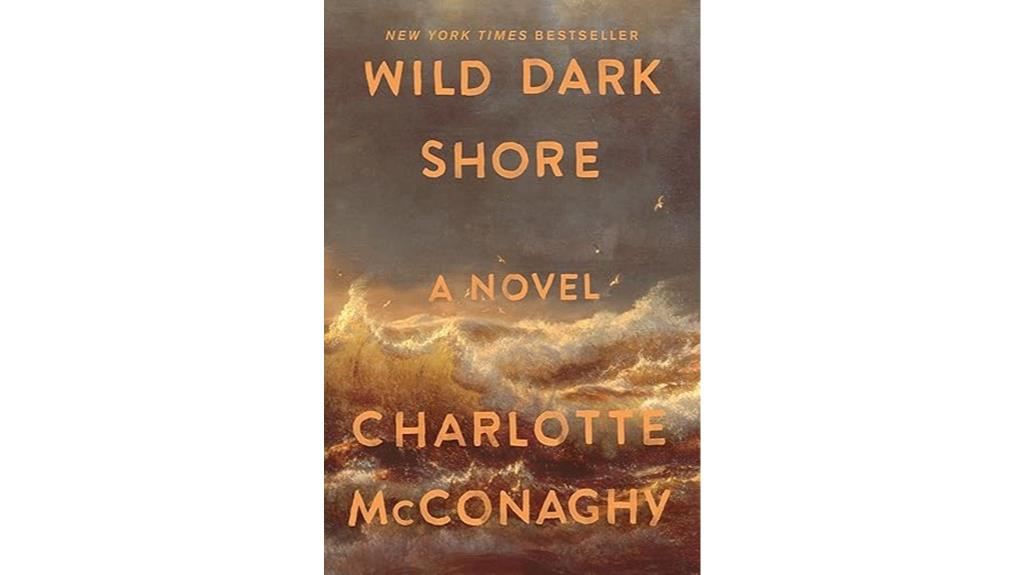
If you’re drawn to richly written stories that blend climate themes with deep emotional journeys, *Wild Dark Shore* should be at the top of your list. I was captivated by Charlotte McConaghy’s lyrical prose, which immerses you in haunting landscapes and raw emotion. The novel explores climate collapse alongside themes of grief, resilience, and hope, making you reflect on humanity’s fragility. Set on a drowning island off Antarctica, the story’s atmospheric writing vividly captures isolation, panic, and renewal. It’s a haunting journey that left me breathless, prompting deep reflection on nature’s power and our future.
Best For: readers who enjoy lush, lyrical prose, emotionally complex stories, and themes of climate change, resilience, and human connection.
Pros:
- Vivid, atmospheric descriptions that immerses readers in haunting landscapes and nature’s cycles
- Deep emotional resonance that evokes grief, hope, and reflection
- Skillful blending of mystery, adventure, and literary depth for a compelling, layered narrative
Cons:
- Pacing may feel uneven at times, affecting overall engagement
- Some readers might find the emotional intensity overwhelming or overly somber
- The plot’s complexity and layered themes may require careful, attentive reading to fully appreciate
Hum: A Novel
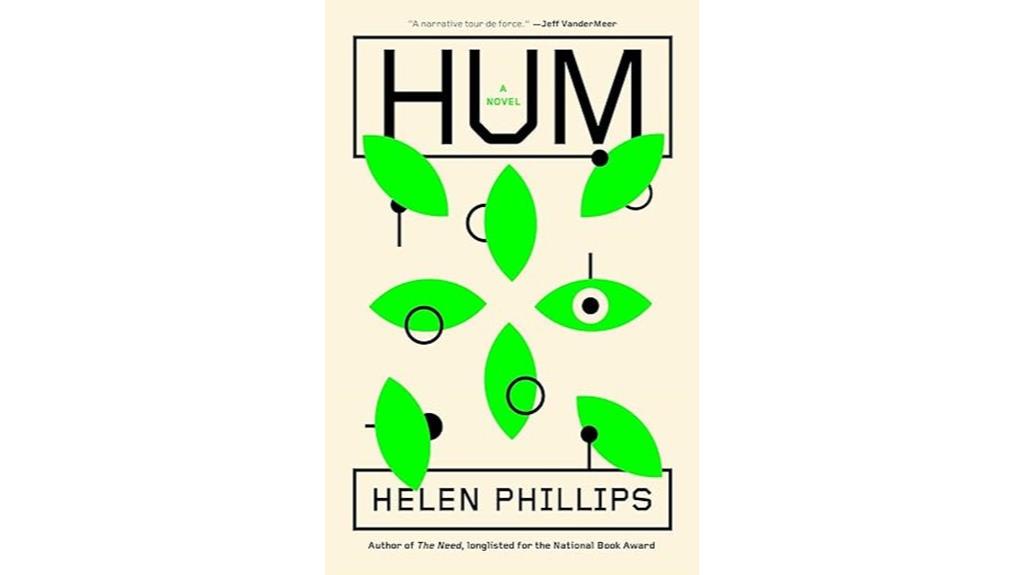
Hum: A Novel stands out for readers who are intrigued by the subtle, thought-provoking exploration of how advanced technology and AI influence everyday life. I found it haunting and revealing, as it shows how data networks know us better than loved ones, raising urgent questions about privacy, identity, and control. The story reflects current societal dysfunctions, environmental decline, and the stark divide between the wealthy and the poor in experiencing nature. It’s a quiet, nuanced look at a future where dependence on omniscient tech may threaten freedom. Though the plot is minimal, the novel’s social commentary and emotional resonance leave a lasting, unsettling impression.
Best For: readers interested in nuanced, thought-provoking explorations of technology’s impact on society, privacy, and environmental decline.
Pros:
- Engaging and vivid prose that vividly depicts household chaos and relatable characters
- Thought-provoking themes that examine privacy, identity, and societal dysfunctions
- Offers a haunting, original perspective on technological dependence and future societal issues
Cons:
- Minimal plot with static characters, making it feel more like a short story than a full novel
- Some descriptive language feels unnecessary or heavy-handed, affecting pacing
- Critics note a lack of depth in social commentary and character development
The Overstory
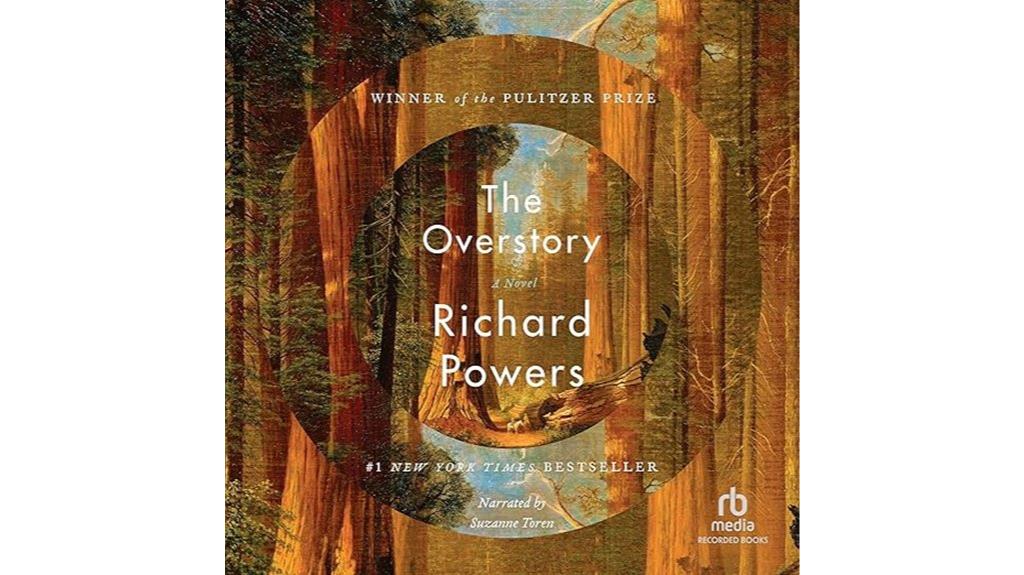
The Overstory stands out as an essential read for environmental enthusiasts and literary fiction lovers who appreciate richly crafted, thought-provoking stories. Richard Powers’ novel combines artistic mastery with vivid descriptions and metaphorical language, making it a milestone in environmental literature. It explores the deep interconnectedness between humans and trees, weaving together diverse characters and historical conflicts to emphasize ecological responsibility. Though complex and at times slow, the lyrical prose and intricate storytelling reward patient readers with emotional insight and a renewed appreciation for forests. It’s a powerful call to action wrapped in a beautifully written, thought-provoking narrative that will stay with you long after you finish.
Best For: readers who appreciate richly detailed, poetic environmental fiction that explores human-nature interconnectedness and are willing to engage with complex, layered narratives.
Pros:
- Praised for artistic mastery, vivid descriptions, and metaphorical language that elevate literary quality.
- Deeply explores ecological themes, fostering awareness and inspiring environmental activism.
- Rewards patient readers with emotional depth, reflection, and memorable, beautifully crafted sentences.
Cons:
- The slow-paced beginning and complex structure may challenge casual or impatient readers.
- Some sections, especially the ending, can be confusing or open to multiple interpretations.
- Characters tend to be complex and damaged, which might be depressing or less engaging for some readers.
A Change of Climate: A Novel
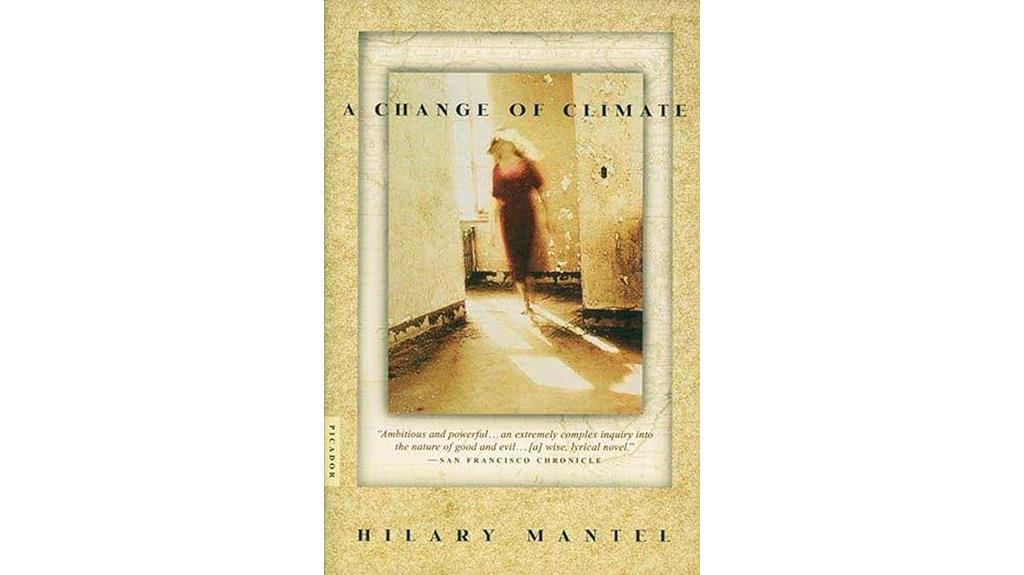
A Change of Climate: A Novel stands out for readers who appreciate subtle, character-driven storytelling that explores moral ambiguity and emotional depth. I was captivated by Mantel’s precise language and keen observations of human behavior, which reveal complex inner struggles. The novel delicately examines themes like secrets, cultural differences, faith, and the impact of past traumas on present lives. Set across diverse landscapes, it shows how climate influences morality and social norms. Mantel’s characters are deeply sympathetic yet flawed, forcing us to confront uncomfortable truths about good and evil. It’s a beautifully crafted, thought-provoking book that rewards careful reading and reflection.
Best For: readers who enjoy nuanced, character-driven literary fiction that explores moral complexity and emotional depth with rich, precise language.
Pros:
- Masterful storytelling with subtlety and clarity that encourages thoughtful reflection
- Deeply developed characters with psychological insight and empathy
- Thought-provoking themes such as secrets, morality, cultural differences, and past traumas
Cons:
- The narrative may be slow-paced for readers seeking fast-paced plots
- Intense scenes and depictions of violence may be disturbing for some readers
- The novel’s subtlety and complexity might require careful, attentive reading to fully appreciate
Love in a Cold Climate
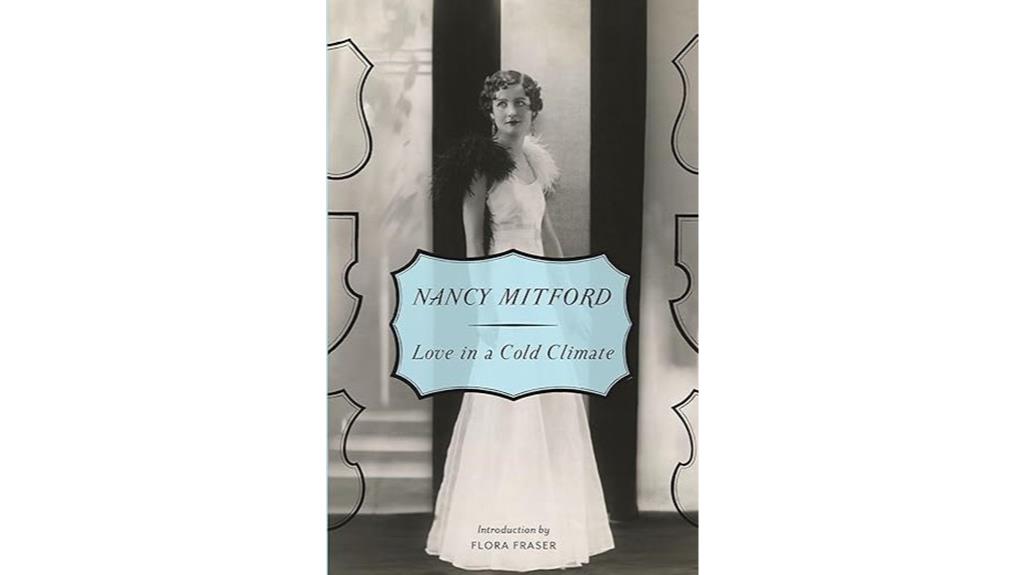
If you enjoy sharp social satire set against the backdrop of British aristocracy, “Love in a Cold Climate” is a perfect choice. This lively novel offers a witty, humorous critique of upper-class life around 1930, filled with eccentric characters and social rituals. Nancy Mitford’s keen eye for detail and her sharp wit shine through, revealing the absurdities of snobbery, vanity, and romantic folly. Through the eyes of Fanny, the observant narrator, you’ll see a world obsessed with appearances and societal expectations, often with a cold, distant tone. It’s a clever, entertaining masterpiece that exposes the superficialities beneath the glittering veneer of aristocratic life.
Best For: readers who appreciate witty social satire, humorous critique of aristocratic life, and engaging character-driven stories set in early 20th-century Britain.
Pros:
- Sharp, clever wit that offers insightful social commentary and humor.
- Vivid, memorable characters and lively depiction of upper-class social rituals.
- Elegant, engaging narrative style that combines satire with moments of poignancy.
Cons:
- Some readers may find the characters’ eccentricities exaggerated or improbable.
- The tone can be quite detached and cold, which might reduce emotional engagement.
- Its focus on social superficiality and snobbery might feel outdated or less relatable to modern audiences.
The Ministry for the Future: A Novel
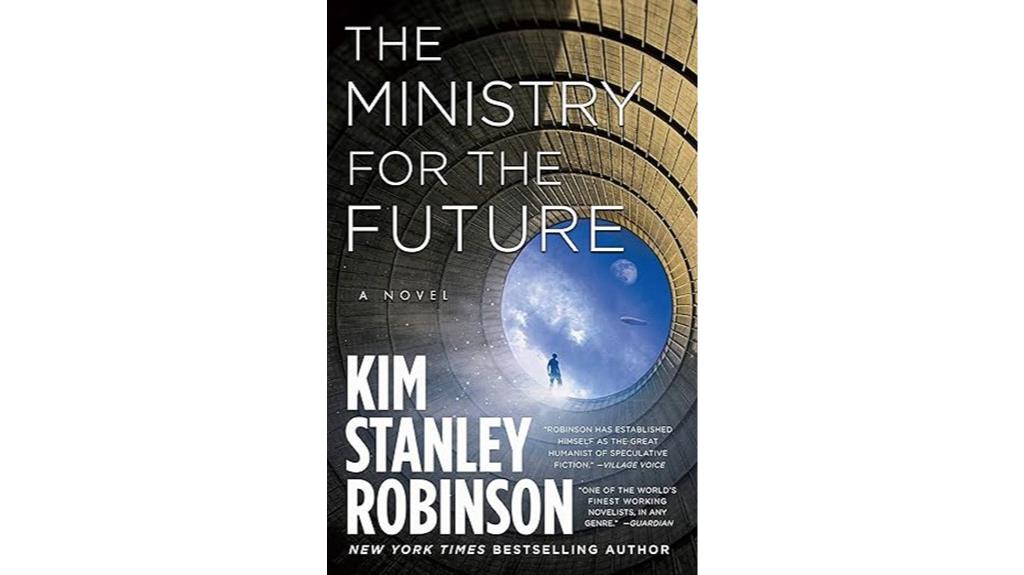
Fans of detailed, innovative approaches to climate change will find “The Ministry for the Future” an essential read. Robinson’s novel dives into current climate crises, highlighting efforts like carbon coins, geoengineering, and wildlife preservation, all driven by a fictional global agency. Through diverse narratives—from eyewitness accounts to essays—the story emphasizes that climate action is ongoing, with no final victory. Characters like Mary Murphy and Frank May embody the human side of these efforts. Robinson’s deep scientific knowledge and political insights challenge readers to rethink solutions, showing that hope lies in persistent, collective effort, even amid overwhelming challenges.
Best For: readers interested in in-depth, scientifically-informed narratives and innovative solutions to climate change that emphasize ongoing activism and global cooperation.
Pros:
- Provides a comprehensive and detailed exploration of current and future climate issues.
- Employs diverse storytelling methods that enhance engagement and understanding.
- Encourages hope and persistence through its message that climate action is an ongoing process.
Cons:
- The complex, non-linear structure may be challenging or confusing for some readers.
- Multiple narrators and infodumps can disrupt the flow and make the story feel disjointed.
- Its ideological perspectives, leaning toward socialism and environmental activism, may not appeal to all audiences.
Spiral in the Sky: A Suspenseful Sci-Fi Novel
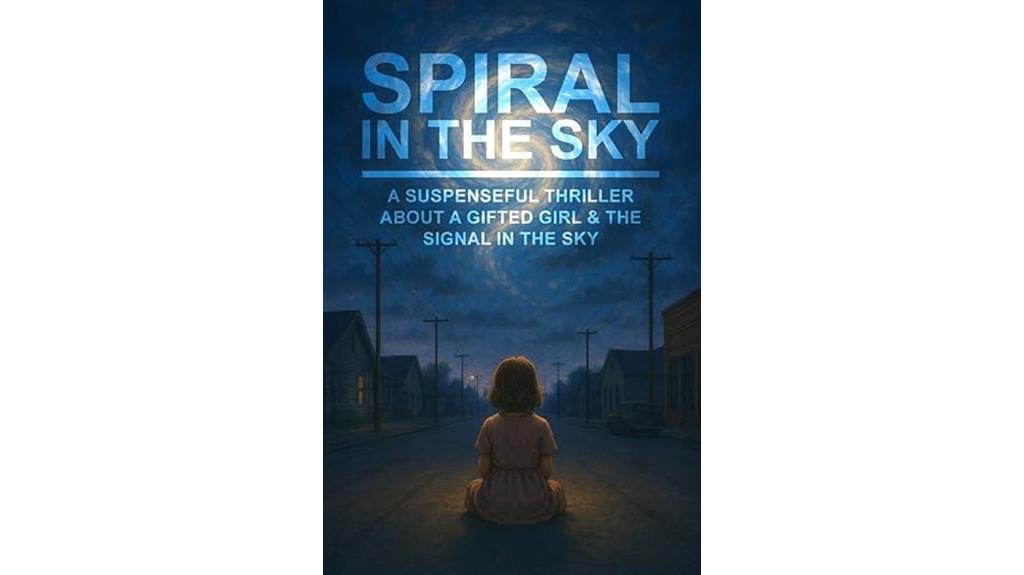
For readers who enjoy tense, thought-provoking stories that blend suspense with dystopian themes, “Spiral in the Sky” offers a gripping experience. This novel centers on a gifted girl and a mysterious “signal in the sky,” prompting questions about society, conspiracy, and survival. Its sharp, engaging writing combines thriller, fantasy, and mystery elements, making it accessible for teens and adults alike. As the story unfolds, it challenges perceptions of humanity and community, leaving lasting impressions. With its layered narrative, “Spiral in the Sky” keeps you hooked while prompting deep reflection on societal issues, making it an unforgettable addition to climate-fiction’s imaginative landscape.
Best For: readers who enjoy tense, thought-provoking dystopian sci-fi stories with themes of conspiracy, survival, and societal reflection.
Pros:
- Engaging and sharp writing style that brings characters and suspense to life
- Thought-provoking themes that encourage reflection on society and human nature
- Suitable for a broad age range, appealing to both teens and adults
Cons:
- The layered narrative might be complex for readers seeking lighter or straightforward stories
- As a dystopian novel, it may contain intense or unsettling themes that some readers find challenging
- Not ideal for those looking for pure entertainment without deeper societal or philosophical questions
The Fox Wife: A Novel
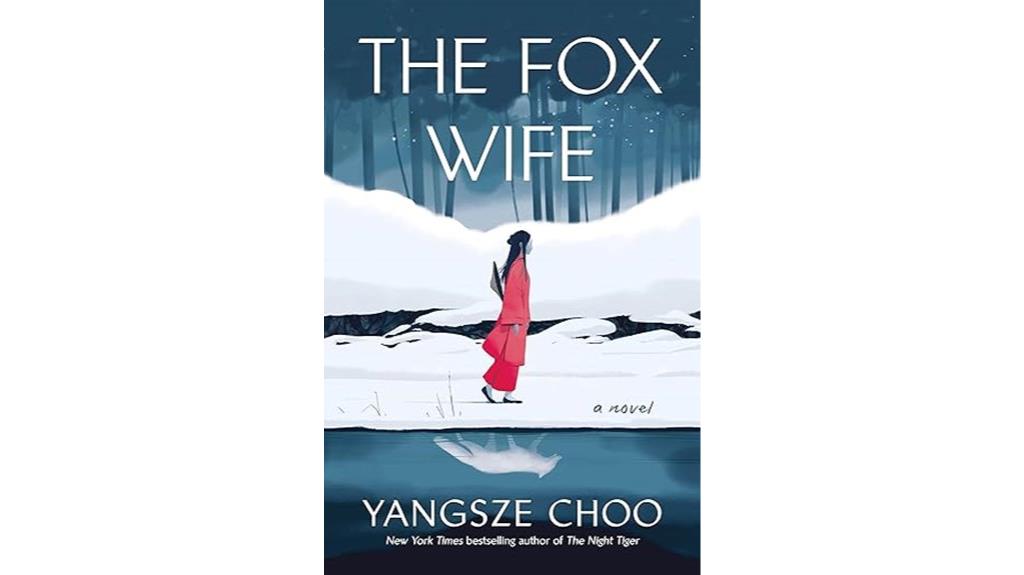
The Fox Wife: A Novel stands out for readers who crave immersive stories rooted in rich Asian folklore and mythology. Set in pre-revolution China, it explores fox spirits—mischievous, beautiful, and capable of both chaos and enlightenment. Through the intertwined stories of Ah San and Bao, it probes into themes of grief, revenge, and the supernatural’s influence on human lives. The narrative weaves myth into real-world settings, creating an atmospheric, fairytale-like world. With lyrical writing and complex characters, the novel invites readers to reflect on the fragile boundaries between worlds. It’s a mesmerizing blend of legend, emotion, and cultural depth that lingers long after reading.
Best For: fans of Asian folklore and mythology seeking a richly atmospheric novel that explores themes of grief, revenge, and the supernatural in pre-revolution China.
Pros:
- Immersive storytelling rooted in authentic Chinese folklore and legends
- Complex, well-developed characters with emotional depth
- Lyrical writing that enhances the mythological and cultural atmosphere
Cons:
- Pacing can be slow in the second half, affecting reader engagement
- Switching viewpoints may challenge some readers’ comprehension
- Some characters and plot elements may feel inconsistent with the fox spirits’ nature
Helm: A Novel
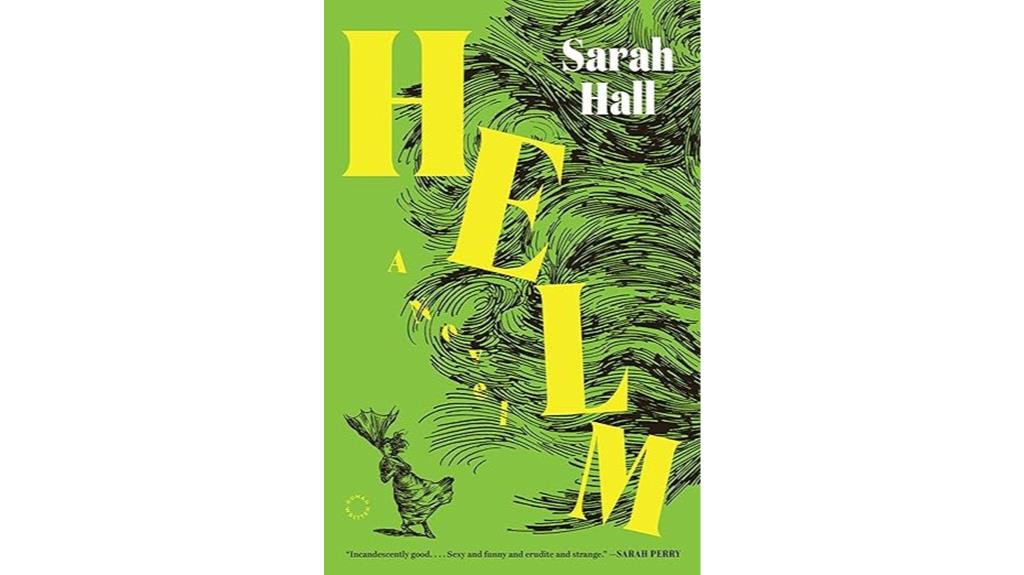
If you appreciate literary experimentation and aren’t afraid of complex, fragmented narratives, Helm: A Novel offers a challenging yet intriguing experience. Sarah Hall’s distinctive voice shines through her layered, disjointed stories inspired by the Helm Wind phenomenon. The book’s structure is deliberately elusive, with tenuous links and symbolic choices like Roman numerals, which invite personal interpretation. Though some find the narrative difficult to follow, others see it as a poetic exploration of nature’s chaos. It’s a book that demands patience and imagination, possibly best enjoyed with a glass of Orkney whisky. Helm pushes the boundaries of storytelling, making you question how we connect with the environment and each other.
Best For: readers who enjoy literary experimentation, complex narratives, and poetic exploration of nature’s chaos.
Pros:
- Showcases Sarah Hall’s masterful, distinctive writing style with layered, poetic language.
- Invites personal interpretation through symbolic structure and fragmented storytelling.
- Offers a unique, thought-provoking exploration of the Helm Wind phenomenon and environmental themes.
Cons:
- The disjointed, fragmented narrative may challenge readers seeking clarity or straightforward storytelling.
- The use of Roman numerals and symbolic choices can be perplexing or feel obscure without context.
- Its elusive structure and thematic complexity might require patience and multiple readings to fully appreciate.
Factors to Consider When Choosing Climate‑Fiction Novels

When selecting a climate-fiction novel, I consider the themes and focus to guarantee they align with my interests and concerns. I also look at the narrative style and pacing to keep the story engaging, while character depth helps me connect emotionally. Additionally, I pay attention to the setting details and scientific accuracy to make the experience both immersive and credible.
Climate Focus and Themes
Choosing a climate-fiction novel that truly resonates with your interests means paying attention to how it addresses current environmental issues. I look for stories that emphasize pressing concerns like global warming, resource depletion, or environmental collapse, ensuring the book aligns with what matters most to me. I also seek themes that explore solutions, activism, or societal responses, as these inspire hope and motivate action. Scientific accuracy and plausible future scenarios are important, adding credibility and emotional depth. I prefer novels that connect ecological preservation, technological innovation, and social justice, making the story richer and more relevant. Ultimately, I want a narrative that weaves climate themes seamlessly into character development and plot, providing a compelling, meaningful exploration of our environmental challenges.
Narrative Style and Pacing
The way a climate-fiction novel is narrated can substantially shape how I experience its themes and messages. A lyrical, poetic style immerses me in the environment’s beauty and fragility, while a straightforward, journalistic approach keeps me grounded in facts and urgency. Pacing also plays a key role: slow sections allow for reflection on complex ideas, deepening my understanding, whereas fast-paced scenes heighten tension and propel the story forward. A well-balanced novel seamlessly blends scientific explanations with character-driven moments, making the climate issues feel personal and relatable. Fluctuating pacing maintains my interest, giving me time to absorb details and moments of action. Choosing a narrative style and pacing that match my preferences helps me connect emotionally and intellectually with the story’s message.
Character Depth and Development
Deeply developed characters in climate-fiction novels draw me into the story by showcasing genuine emotional growth and complex motivations. When characters face environmental crises, their internal conflicts and moral dilemmas reveal personal accountability, making the issues more relatable. Well-crafted arcs often mirror societal struggles, allowing me to see different perspectives on climate change and fostering empathy. Realistic characters with layered personalities evoke strong emotions—hope, despair, resilience—that deepen my connection to the narrative. Their journeys highlight internal transformation amid external chaos, making abstract ecological themes tangible. These characters’ authentic development helps me understand the human impacts on nature and emphasizes that individual responses matter. Ultimately, compelling character depth transforms climate fiction from mere storytelling into a powerful reflection of real-world challenges.
Setting and Landscape Descriptions
Immersing myself in climate-fiction novels means paying close attention to how the setting and landscapes are described. Vivid descriptions often highlight environmental changes like melting glaciers, deforestation, or rising sea levels, emphasizing ecological crises. Natural settings such as forests, oceans, and deserts serve as atmospheric backdrops and symbolic elements of resilience or decay. The portrayal of landscapes usually reflects the story’s themes, with lush environments contrasting stark, devastated scenes to evoke emotional responses. Authors use sensory-rich details—salt on lips, wind rustling through trees, burning forests—to fully immerse readers in a climate-altered world. Additionally, the landscape’s evolution mirrors characters’ journeys, reinforcing themes of adaptation, loss, or hope amid the impacts of climate change.
Scientific and Technical Accuracy
When choosing climate-fiction novels, verifying their scientific and technical accuracy is key to gaining a realistic understanding of environmental issues. I look for stories that accurately depict current climate science, including concepts like greenhouse gases, carbon cycles, and climate feedback mechanisms. Credible novels incorporate recent research, data, or expert insights, which makes their portrayal of environmental challenges and solutions more authentic. I also check if technological and ecological solutions align with real-world feasibility and scientific consensus. Be cautious of exaggerated scenarios, such as implausible geoengineering methods or unproven models, which can distort facts. Well-researched climate fiction often references established scientific principles, seamlessly integrating them into the narrative to educate and inform without sacrificing storytelling.
Emotional and Intellectual Impact
Have you ever read a climate-fiction novel that made you feel both inspired and unsettled? These stories often explore themes of loss, hope, and resilience, pushing us to reflect on our own environmental attitudes. The most impactful works challenge us to contemplate complex scientific, political, and ethical questions about climate change and humanity’s role in ecological destruction. A balance of lyrical storytelling and thought-provoking ideas leaves a lasting impression, encouraging ongoing reflection. Emotional resonance is heightened through vivid landscapes, relatable characters, and compelling narratives that evoke feelings of urgency, grief, or optimism. By combining sensory-rich descriptions with layered themes, these novels foster both emotional engagement and critical thinking, making their messages resonate long after the last page.
Author’s Perspective and Bias
Understanding the emotional and intellectual impact of climate-fiction novels helps us grasp their power, but it’s equally important to ponder the author’s perspective and potential biases. An author’s background, beliefs, and experiences can shape the story’s themes, tone, and proposed solutions, influencing how we interpret the message. Biases might appear through the emphasis on certain technologies, political views, or cultural values, which reflect the author’s worldview. Recognizing these influences helps us critically evaluate the novel’s objectivity and underlying motives. Some authors may use their work to promote specific environmental policies or social ideals, subtly guiding our perceptions. Being aware of an author’s perspective allows us to approach their story with a more nuanced understanding of the messages and biases woven into the narrative.
Reading Level and Accessibility
Choosing the right climate-fiction novel depends heavily on your reading level and how accessible the book is. I recommend considering whether the language and vocabulary match your comfort zone, as some novels can be quite literary or dense. Look for books with clear writing and straightforward plots that help you stay engaged without confusion. Check if the story uses complex formats like multiple narrators or infodumps, which might require extra focus. Be mindful of technical terms or environmental jargon that could be challenging if you’re new to climate issues. Also, choose a book length and pacing that suit your preferences—whether you prefer a quick read or a more immersive experience. Finding the right balance ensures you enjoy and fully understand the message behind the story.
Frequently Asked Questions
How Do Climate-Fiction Novels Influence Real-World Environmental Actions?
Climate-fiction novels inspire me to see the urgency of environmental issues differently. They make complex problems personal and tangible, motivating me to take action. When I read about future worlds affected by climate change, I feel compelled to reduce my carbon footprint and support sustainable initiatives. These stories turn awareness into a call for change, encouraging real-world actions that can help address the crises depicted on their pages.
Are These Novels Suitable for Younger Readers or Only Adults?
Picture a young reader holding a book where rivers swell and forests whisper secrets—climate-fiction can be just as gripping for them. Many novels are crafted with vivid imagery and accessible language, making complex issues understandable and engaging for younger audiences. While some themes might suit teens better, there are plenty of age-appropriate options that spark curiosity and compassion about our planet, inspiring them to take action early on.
What Themes Are Most Common Across Top Climate-Fiction Books?
The most common themes in top climate-fiction books include environmental collapse, humanity’s resilience, and the ethical dilemmas of climate action. I see stories exploring how communities adapt, the consequences of neglecting nature, and the hope for redemption through innovation. These themes make me reflect on our real-world choices and inspire a sense of urgency and responsibility. If you’re interested in thought-provoking tales, these themes definitely resonate and stay with you long after reading.
Can These Novels Be Used Effectively in Educational Settings?
Absolutely, these novels can be incredibly effective in educational settings. They spark critical thinking, inspire meaningful discussions, and foster awareness about climate issues. I’ve seen them engage students emotionally and intellectually, making complex concepts accessible and compelling. By combining storytelling with real-world concerns, these books motivate learners to act and imagine a better future. Using them in classrooms, libraries, or workshops truly transforms how we comprehend and approach climate change.
How Accurate Are the Scientific Depictions in These Climate-Fiction Stories?
The scientific depictions in these climate-fiction stories are often quite accurate, as authors usually base them on current research, climate models, and expert insights. I find that many writers do a great job of blending real science with compelling storytelling, which helps me understand complex issues better. Of course, some creative liberties are taken, but overall, these novels offer a credible and thought-provoking glimpse into our planet’s possible futures.
Conclusion
Diving into these climate-fiction novels reshapes how I see our planet and our future—like discovering a secret portal to a better understanding, much like stumbling upon a vintage map in a digital age. Whether it’s the haunting Wild Dark Shore or the suspense of Spiral in the Sky, these stories fuel my hope and urgency. So, grab one—let’s not wait for a DeLorean to change the course of history.






